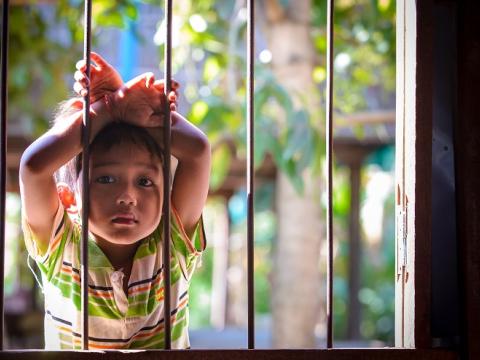Will post-2015 education goals be enough for the world’s most vulnerable children?

“No education target should be considered met unless met for all.”
It’s been almost one month since I participated in UNESCO’s World Education Forum in Incheon, Republic of Korea, and these words – outlined in the Incheon Declaration – still weigh heavily in my mind.
“No education target should be considered met unless met for all.” A truly admirable goal, but will we be able ensure “inclusive and equitable education for all by 2030” when our track record says otherwise?
Will we be able ensure “inclusive and equitable education for all by 2030” when our track record says otherwise?
Since the movement for Education for All (EFA) was initiated in Jomtien, Thailand in 1990, and reiterated in Dakar, Senegal in 2000, just one third of countries have achieved all of the measurable EFA goals. Only half of all countries have achieved the goal of universal primary enrolment as outlined in the Millennium Development Goals (MDGs).
Fifteen years after the adoption of the MDGs, 58 million children of primary school age are out of school globally. Out-of-school children, including those with disabilities, girls in some cultures, and children who live and work on the streets, are particularly vulnerable to exploitation, violence and discrimination.
Consider Herbert, a nine-year-old from Uganda, living with severe physical disabilities: his speech is delayed, he cannot walk and doesn’t have the use of his right hand. Both of his parents died before he was five, leaving him in the care of his grandmother, who is also looking after seven other orphaned children.
Although Herbert can hop from place to place on his functioning leg, he doesn’t go to school because his grandmother cannot afford a wheelchair. Herbert says he would like to go to school – he can even write a few figures. But school is not in his future unless something is done to fix the broken systems that keep education beyond his reach. Herbert is just one of the millions of children left behind by the MDGs.
Herbert is just one of the millions of children left behind by the MDGs.
With the MDGs set to expire at the end of the year, and a new set of post-2015 goals being developed to take their place, this is a critical time to refocus on the role of education in poverty reduction. The Incheon Declaration will underpin education targets in the Sustainable Development Goals (SDGs) that Member States will sign up to at the United Nations General Assembly in September. The declaration encourages countries to provide inclusive, equitable, quality education and life-long learning opportunities for all children. “No education target should be considered met unless met for all.”
Right now, another nine-year-old who used to struggle to access quality education is receiving additional education interventions to help her overcome a learning disability. Her name is Sally, and she is a registered child in World Vision’s sponsorship programme in Jerusalem, West Bank and Gaza.
To help students like Sally, World Vision established weekend remedial education programmes. According to she and her parents, these classes have changed her life, as they’ve witnessed significant gains in her academic performance.
We know that inclusive, equitable, quality education for children is possible. From Syria to South Sudan, Nepal to Sierra Leone, World Vision is working to help realise children’s right to education in the most difficult circumstances – even for those children facing additional barriers to education like disability, gender discrimination or extreme poverty.
Watch the video: Syrian children have the right to education and protection
We know that inclusive, equitable, quality education for children is possible - even in the most difficult circumstances.
What will it take to make amends with the world’s most vulnerable children for the unmet promises made to them so far? This will require drastic refocusing of resources to bring quality education to the most vulnerable.
Estimates show that currently around 40 per cent of public spending reaches the richest 10 per cent of the population. Education receives less than 2 per cent of humanitarian funding. These trends need to be reversed if the Incheon goals are to be realised.
World Vision strongly supports the idea that governments, particularly in lower income countries, work at allocating an increased proportion of their GDP to education. We also encourage increasing the amount that is provided from ODA to these countries.
Furthermore, World Vision would like to see donors commit to clear targets – doubling aid to basic education and prioritising their aid to low income and fragile, conflict-affected countries as well as targeting the most marginalised communities.
Children need to be in the forefront of all discussions leading up to the adoption of the SDGs.
Children need to be in the forefront of all discussions leading up to the adoption of the SDGs – especially children like Herbert who missed out on the success of the MDGs and are at risk of being forgotten again.
Can we ever truly make up for the time we’ve already lost with the world’s most vulnerable children? The answer has to be yes, but it will require everything we’ve got.
“No education target should be considered met unless met for all.”
Linda Hiebert is the Senior Director, Education and Life Skills at World Vision International. She has over 25 years of experience in international development, including work as programme officer, director and vice-president in a number of countries and regions. Linda has a Bachelor's degree in Nursing, and a Master's degree in Development from Harvard's Kennedy School of Government.